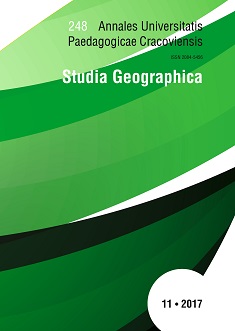The Polish nobility contribution in developing the potential cultural landscapes on Bessarabia territory
Keywords:
noble house, historical and cultural heritage, cultural landscape, dendrological parksAbstract
Cultural landscapes, created in time under the influence of natural and anthropic factors, were subject to quantitative and qualitative changes. In the structure of landscapes, you can also notice degradation, ruin, abandonment etc. This presentation of the research results is aimed at counteracting the decline of this cultural phenomenon in the Republic of Moldova and finding real solutions based on the description, analysis, interpretation of noble parks, in historical Bessarabia which were created by the activities of the nobility of Polish origin. Monuments of landscape architecture in the Republic of Moldova are estimated based on the typology carried out by Cocean Pompeia. According to representative genetic cronies, as well as the definition of cultural landscapes, we chose cultural landscapes resulting from production activities: parks with noblemen’s manors. The Polish nobility in the historical Bessarabia had an important role in the process of cultivating the landscapes. She left a specific architecture behind her - dehydro-parks designed by well-thought-out structures. Manor houses and deontrological parks in the territory of the Republic of Moldova, those who were created thanks to the activities of the nobility of Polish origin are recorded in the Register of monuments under the protection of the state. Today, these monuments are in very bad condition, and the institutions of the Moldovan state are unable to find a solution to this problem and lack of money. However, despite this, today noble houses and deontrological parks are very important elements of landscape pictures, and can become a good element in the development of tourism in Moldova.References
Baciu, V. (2010). Conacele boiereşti din Basarabia (Volumul I). Timpul, Cotidian Naţional Independent.
Cocean, P., David, N. (2014). Peisaje culturale. Cluj-Napoca: Editura RISOPRINT.
Cocîrţă, P. (2011). Patrimoniul natural şi socio-cultural. Starea mediului în Republica Moldova, în 2007–2010 (Raport Naţional), Chişinău.
Filipescu, C., Giurgea, E. (1919). Basarabia-consideraţii generale, agricole, economice şi statistice. Chişinău: Institutul de arte grafice „România nouă”.
http://cuvintul.md/article/Conacul-Andrianov-o-piesa-istorica-pe-harta-satului-Raspopeni/
http://www.moldovenii.md/md/section/331/content/4096
https://observatorul.md/turism/2017/01/14/22263_intre-nistru-si-prut-conacul-bjozowskz-din-solonet
https://www.facebook.com/pg/AIRM.Moldova/photos/?tab=album&album_id=369090189782407
Kuleshova, M. (2011). Cultural landscape in the World Heritage List. Regional Seminar for CIG Countries “Safeguarding World Heritage in the context of New Global Challenges”, Moskow.
Law no.1530-XII of 22.06.93 regarding protection of monuments of the Republic of Moldova. Monitorul Oficial No.1/3 on 30.01.1994.
Law no.1538 of 25.02.1998 regarding the fund of state protected natural areas. Monitorul Oficial No. 66–68 art. No: 442 on 16.07.1998.
Леонтьев, П.В. (1967). Парки Молдавии. Кишинёв: Картя Молдовеняскэ.
Register of state protected monuments of the Republic of Moldova. Approved by the Parliament Decision no. 1531-XII of 22.06.1993.
Stoica, F., Schreiber, W. (2008). Peisaje culturale istorice. Cluj-Napoca: Editura “Argonaut,,.
Tarhon, P. (2013). Parcurile vechi boiereşti din Republica Moldova. AŞM, Muzeul Naţional de Etnografie şi Istorie Naturală. Chişinău: Editura „Pontos”.
Published
Issue
Section
License
The submission of a paper to be published is synonymous with an agreement to transfer the copyright free of charge from the author to the publisher. The author also agrees to permit the publisher to publish the paper in printed form, open access online form, digital library form and other digital platforms with which the publisher has or will have a publishing agreement. Furthermore, the author agrees to not limit the number of copies that may be printed or issued by the publisher. In the case of co-authored papers, it is assumed that the corresponding author is authorized to represent the remaining co-authors in this respect. Authors are requested to sign a copyright declaration.

